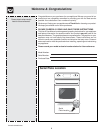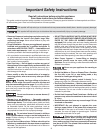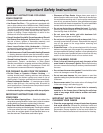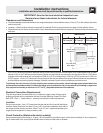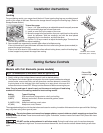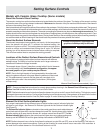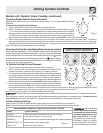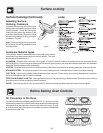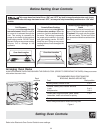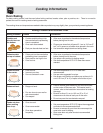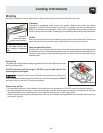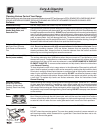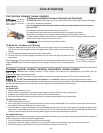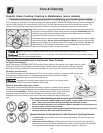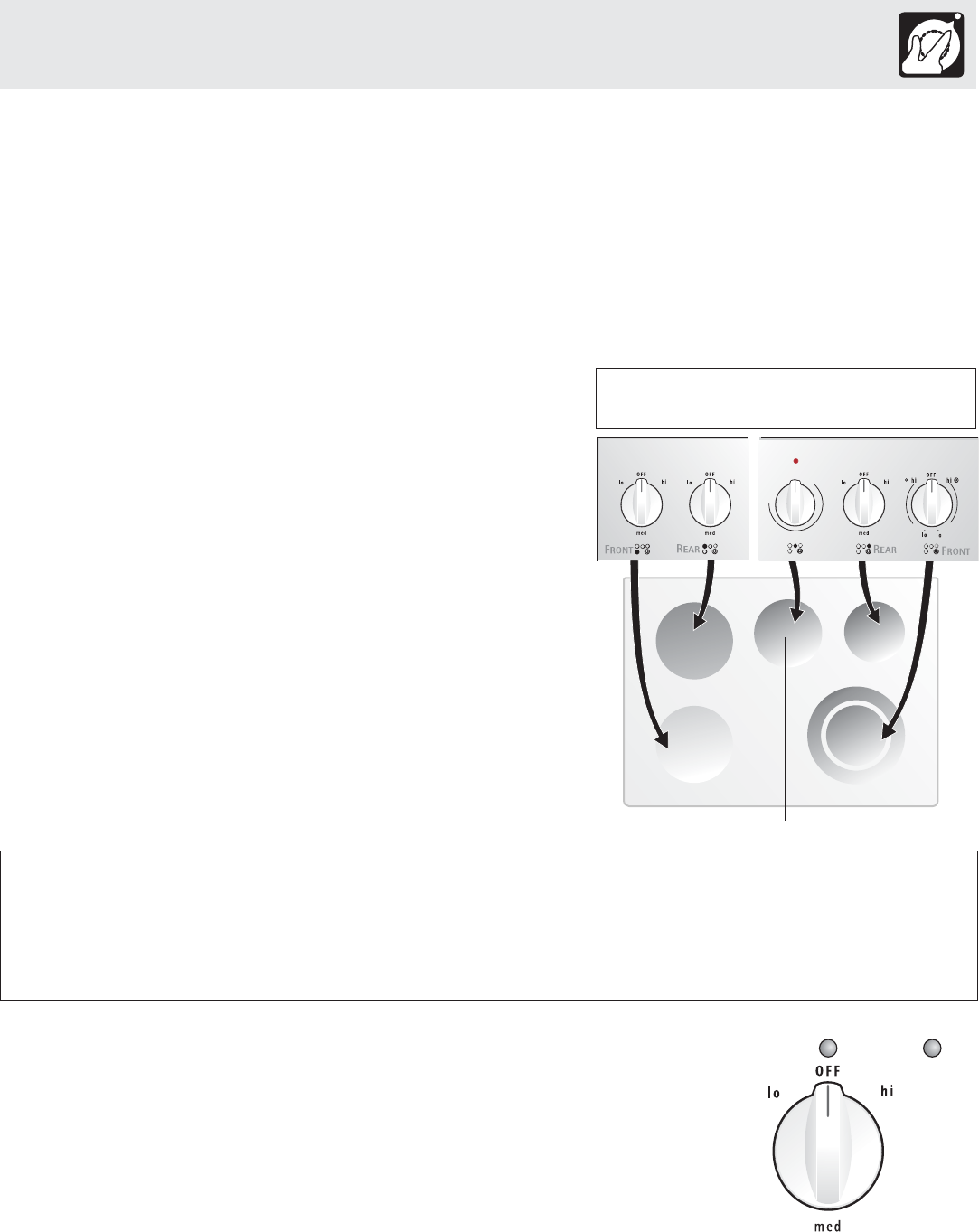
7
Setting Surface Controls
Models with Ceramic Glass Cooktop (Some models)
About the Ceramic Glass Cooktop
The ceramic cooktop has radiant surface elements located below the surface of the glass. The design of the ceramic cooktop
outlines the area of the surface element underneath. Make sure the diameter of the pan matches the diameter of the element
outline on the cooktop (See Figure 1).
Heat is transferred up through the surface of the cooktop to the cookware. Only flat-bottom cookware should be used. The type and
size of cookware, the number of surface elements in use and their settings, are all factors that will affect the amount of heat that will
spread to areas beyond the surface elements. The areas surrounding the elements may become hot enough to cause burns. The
cooktop should not be used as a cutting board or work surface. Dropping heavy or hard objects on the cooktop may crack it. Pans
with rough bottoms may scratch the cooktop surface. Placing foods directly on the smoothtop surface (without cooking utensils) is
not recommended as difficult cleaning will result and foods may smoke and cause a potential fire hazard.
NOTE: Please read detailed instructions for ceramic glass cooktop cleaning in the General Care & Cleaning section and
Before You Call checklist section of this Use and Care Guide.
NOTE: Radiant elements have a limiter that allows the element to cycle on and off, even at the HI setting. This helps to prevent
damage to the ceramic smooth top. Cycling at the HI setting is normal and can occur if the cookware is too small for the radiant
element or if the cookware bottom is not flat (Refer to page 12 under Selecting Surface Cooking Utensils).
About the Radiant Surface Elements
The element temperature rises gradually and evenly. As the temperature
rises, the element will glow red. To maintain the selected setting, the
element will cycle on and off. The heating element retains enough heat to
provide a uniform and consistent heat during the off cycle. For efficient
cooking, turn off the element several minutes before cooking is complete.
This will allow residual heat to complete the cooking process.
Locations of the Radiant Surface Elements and Controls
Your appliance is equipped with radiant surface elements with different
wattage ratings. The ability to heat food quicker and in larger volumes in-
creases as the element wattage increases.
The example shown (figure 1) describes a model with all kind of elements
you could possibly have, but the element configuration, the appear-
ance and graphics of your cooktop may be different.
NOTE: Due to the high intensity of heat generated by the surface ele-
ments, the glass surface will turn green when the element will be turned
off. This phenomenon is normal and the glass will come back to its
original white color after it has completely cooled down. (White glass
cooktops only).
hi
lo
med
OFF
8
7
64
3
sim
28
7
64
3
sim
2 8
7
64
3
sim
2
Small
Petit Grand
Large
.
.
.
.
.
.
.
.
.
.
.
66
44
22
Element Configuration, appearance and
graphics of cooktops may be different
Warmer Zone Element (some models) - Figure 1
Element On & Hot Surface Indicator Lights
Your range is equipped with two different types of radiant surface control indicator lights that
will glow on your range— the Element On indicator light and the Hot Surface indicator lights
(See Figure 2).
The Element On indicator lights are located on the control panel above each radiant element
control knob and will glow when a surface element is turned ON. A quick glance at this indicator
light after cooking is an easy check to be sure ALL surface controls are turned OFF. The Hot
Surface indicator light located on the control panel will glow when any surface cooking area
heats up and will REMAIN ON until the glass cooktop has cooled to a MODERATE level.
8
7
64
3
sim
2
Hot Surface
Surface Chaude
Figure 2
NOTE: Radiant elements have a limiter that allows the element to cycle ON and OFF, even at the HI setting. This helps to
prevent damage to the ceramic smoothtop. Cycling at the HI setting is normal and will occur more often if the cookware is
too small for the radiant element or if the cookware bottom is not flat.




